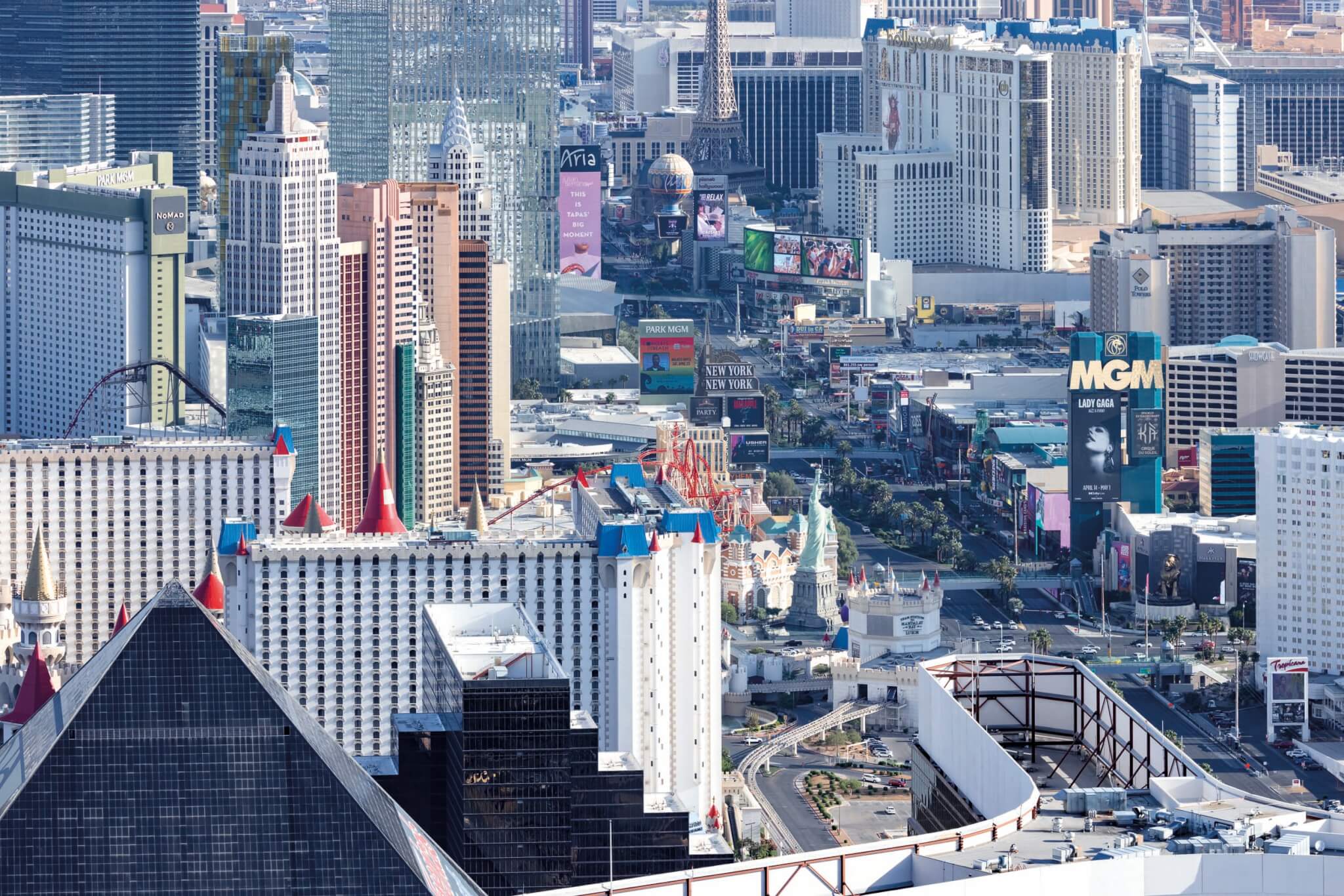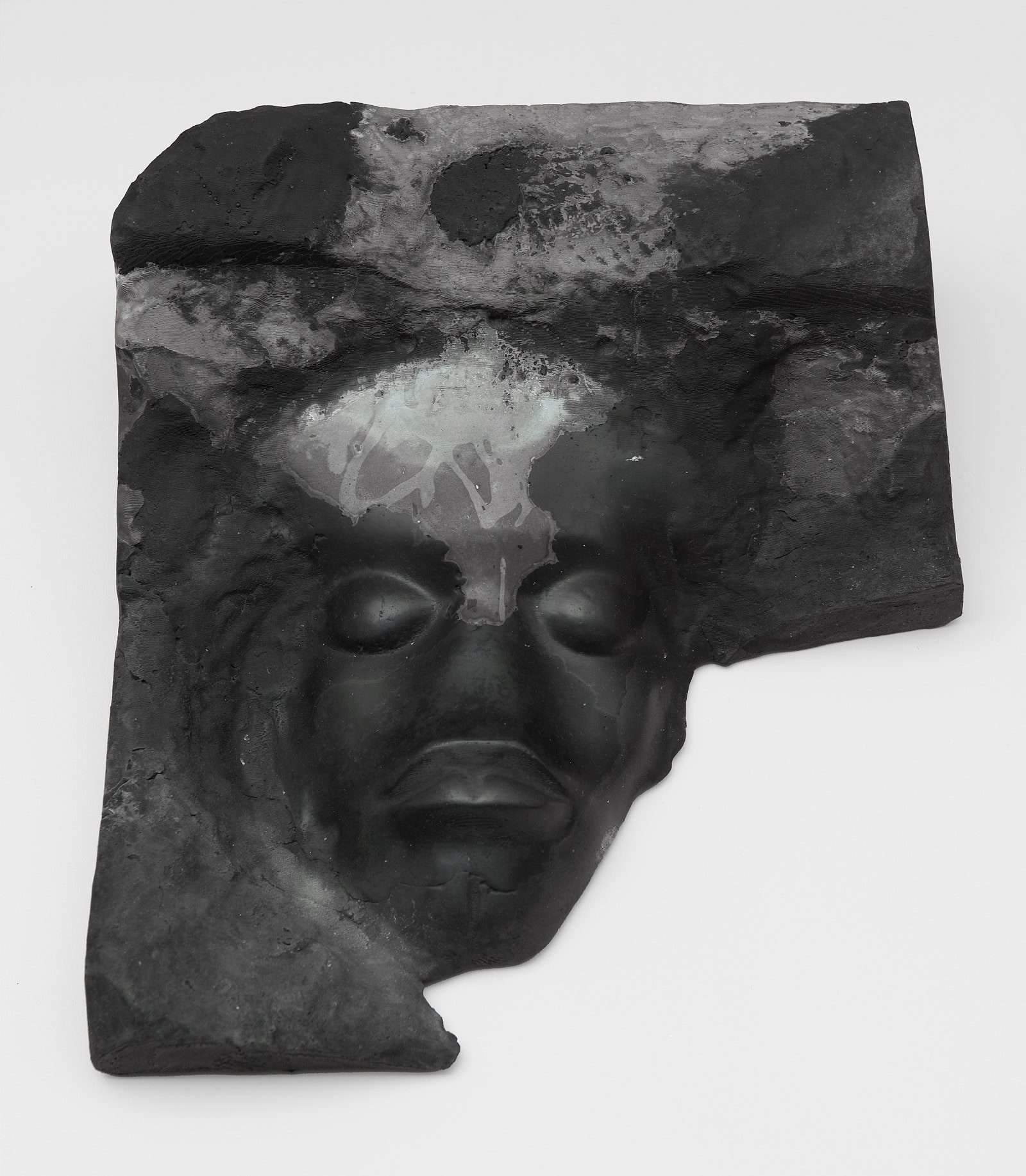Rome – Las Vegas: Bread and Circuses | Photographs by Iwan Baan with contributions by Lindsay Harris, Izzy Kornblatt, and Ryan Scavnicky | Lars Müller Publishers | $53
I have yet to make a pilgrimage to The Sphere, but I think about it more than I’d like to admit, searching for tickets to see Dead & Company under its dome of high-resolution screens or doling out Instagram likes to friends who road-tripped east on Interstate 15 in search of immersive communion. As Las Vegas’s newest attraction, The Sphere opened in 2023, but the values it embodies were there all along. These are captured in the latest photo book from Iwan Baan, Rome – Las Vegas: Bread and Circuses: desire, spectacle, the “horror” of global tourism, as contributing essayist Ryan Scavnicky puts it after Nikola Tesla. For all the earthly talk of showgirls and slot machines, fear and loathing, ducks and decorated sheds, Sin City is a place of passion and transcendence: a truth closer to godliness than devilish temptation.
People yearn for transformation, to be connected to something greater than themselves. Which is why Baan’s photographs of the people and architecture of Vegas pair so seamlessly with his images of Rome, taken during a sunbaked heatwave in 2022.

Baan articulates urbanism at two scales. In claustrophobic compositions, his street photography captures the alienation of the Grand Tour. E. M. Forster once described the ever-itinerant plight of the early-20th-century tourist, a description that still applies more than 100 years later. “[They are] handed about like a parcel of goods from Venice to Florence, from Florence to Rome, living herded together in pensions or hotels, quite unconscious of anything that is outside Baedeker, their one anxiety to get ‘done’ or ‘through’ and go on somewhere else.”
Within this murmuration, Baan freezes moments of exhaustion or disorientation in the search for togetherness. One image, taken at the Trevi Fountain, is devoid of middle ground. A trio of young women with punkish buzz cuts stand in the center frame amid a press of bodies. Only one looks toward the swirling stone of the baroque fountain. In number and placement, these figures mirror the statues: Oceanus presiding, flanked by Abundance and Salubritas.
By contrast, Baan’s aerial views—more imperial than omniscient—display the urban fabric writ large and sprawling, with grids extending past the edges of the full-bleed page. Over nearly two decades of practice, this particular helicopter angle has become this Dutch photographer’s de facto signature. There are sections in Rome – Las Vegas that rely too heavily on this godlike point of view and could use a tighter edit. Do we really need so many spreads of the incursion of Vegas suburbia on the landscape? Then again, maybe that’s the point: It keeps growing.
Instigated by an invitation by the American Academy in Rome to mount the exhibition From Las Vegas to Rome, this book attempts a dialogue not only between two cities but between itself and Learning from Las Vegas (LFLV), which celebrated its 50-year anniversary in 2022. Lindsay Harris, the academy’s interim Andrew Heiskell Arts Director, reproduces Robert Venturi, Denise Scott Brown, and Steven Izenour’s famous simile in her introductory essay: “Las Vegas is to the Strip what Rome is to the Piazza.”

Opening spreads echo the parallel construction of this phrase: the ruins of the Roman Forum on the left-hand page, the Colosseum Theater at Caesars Palace on the opposite. Seen from the air, Piazza Navona’s oblong splendor is darkened by late-afternoon shade, and Vegas’s once-seedy old town is covered by the canopy of Jon Jerde’s Fremont Street Experience. There’s a wit and delicacy in these early diptychs, and the dedication to a binary dialogic is reflected even in the paper choice, which is glossy on one side and matte on the other. Las Vegas, of course, gets the slicker surface, while rough aligns with the Eternal City’s innate tactility.
While bridging the geographic divide between the Nevada desert and the Italian capital via the labors of a nomadic photographer (who was in residence at the academy at the time) feels natural, spanning the temporal and intellectual distance to LFLV is, ultimately, more difficult. Harris suggests Scott Brown’s photographic oeuvre as a precedent, a keen-eyed body of work often focused on the collapsing of signage and urban space. Baan’s images of The Sphere set within Vegas’s everyday banality lovingly echo her groundbreaking work. (He also made a pilgrimage of his own to visit Scott Brown at home, which is recounted by Izzy Kornblatt in the volume.) Where LFLV so iconically celebrates the roadside TANYA billboard, Rome – Las Vegas catches a Sphere-sized emoji giving side-eye.
Baan has Vegas covered, but Rome evokes a different book, Complexity and Contradiction, which is packed with analysis of Roman structures, many illustrated by Venturi’s black-and-white photographs—perhaps taken during his own time as a fellow at the academy. In a note for the 1977 second edition, Venturi expressed a wish that his title be amended to include “in Architectural Form.” Like the head and tail of a silver dollar deposited in a slot machine, form complements LFLV’s focus on symbolism.

Baan, whose images definitively catalog contemporary architecture, is an expert in photographing form (even when decorated in kitsch). His Pantheon series depicts the bulbous dome sticking out from the urban fabric, white and round. Baan zooms in on the proto-Sphere, moving from Nolli map aerial to wilted tourists perched on its steps with Powers of Ten skill. But once he’s inside the church, his camera angle changes and turns upward toward the coffered dome.
Photographers could be thought of as liminal beings—creatures behind the lens, not in front of it; observers of the city, not participants, and certainly not tourists seeking snapshots. Yet, in gazing up at the Parthenon’s great oculus, Baan falls under the building’s ancient sway and takes the same picture as the rest of us sightseers. And in this act, there’s communion.
Mimi Zeiger is a Los Angeles–based critic and curator.



